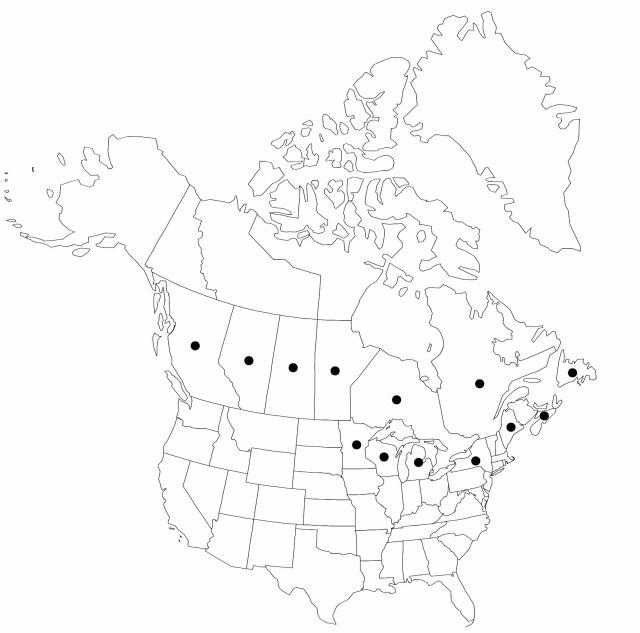Carex adusta
in W. J. Hooker, Fl. Bor.-Amer. 2: 215. 1839.
Plants densely cespitose. Culms 25–80 cm. Leaves: sheaths adaxially hyaline, often green-veined nearly to collar, summits U- or V-shaped or rounded, sometimes prolonged to 1.5 mm beyond collar; distal ligules 1–4 mm; blades 2–5 per fertile culm, 7–25 cm × 2–3.5 mm. Inflorescences stiffly erect, dense or open, greenish brown to gold, 2–4.5 cm × 12–20 mm; proximal internode 2–15 mm; 2d internode 2.5–5 mm; proximal bracts leaflike, much longer than inflorescence, or bristlelike. Spikes 5–8(–11), usually distinct, broadly ovoid, 8–11 × 5–8 mm, base and apex acute to rounded. Pistillate scales reddish brown, with paler center, ovate to broadly ovate, 4–5.5 mm, equaling, ± covering perigynia, hyaline margin absent or to 0.2 mm, apex acute to mucronate. Perigynia ascending to spreading, green, gold, or cream colored, conspicuously 7–11-veined abaxially, conspicuously 0(–2)-veined adaxially, ovate to broadly ovate, plano-convex to biconvex, 4–5 × 1.9–2.5 mm, 0.7–1.1 mm thick, margin flat, including wing 0.2–0.6 mm wide, often thickened; beak gold at tip, flat, ciliate-serrulate, abaxial suture usually inconspicuous, distance from beak tip to achene 1.7–2 mm. Achenes obovate to elliptic, 2.1–2.5 × 1.6–2 mm, 0.7–1 mm thick. 2n = 78.
Phenology: Fruiting spring–summer.
Habitat: Dry, acidic, sandy soils of open woods and clearings, moist shores
Elevation: 0–400 m
Distribution

Alta., B.C., Man., Nfld. and Labr. (Nfld.), N.S., Ont., Que., Sask., Maine, Mich., Minn., N.Y., Wis.
Discussion
Selected References
None.
